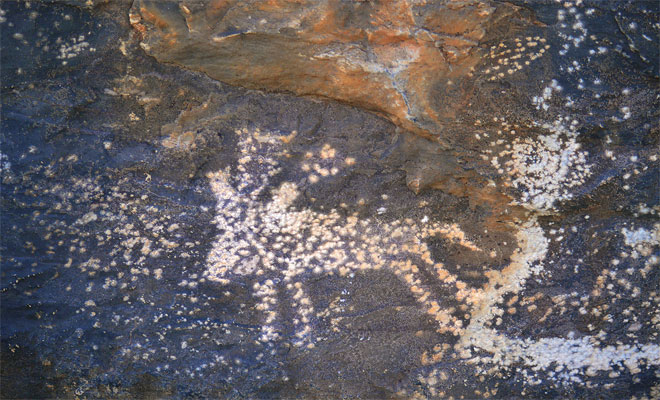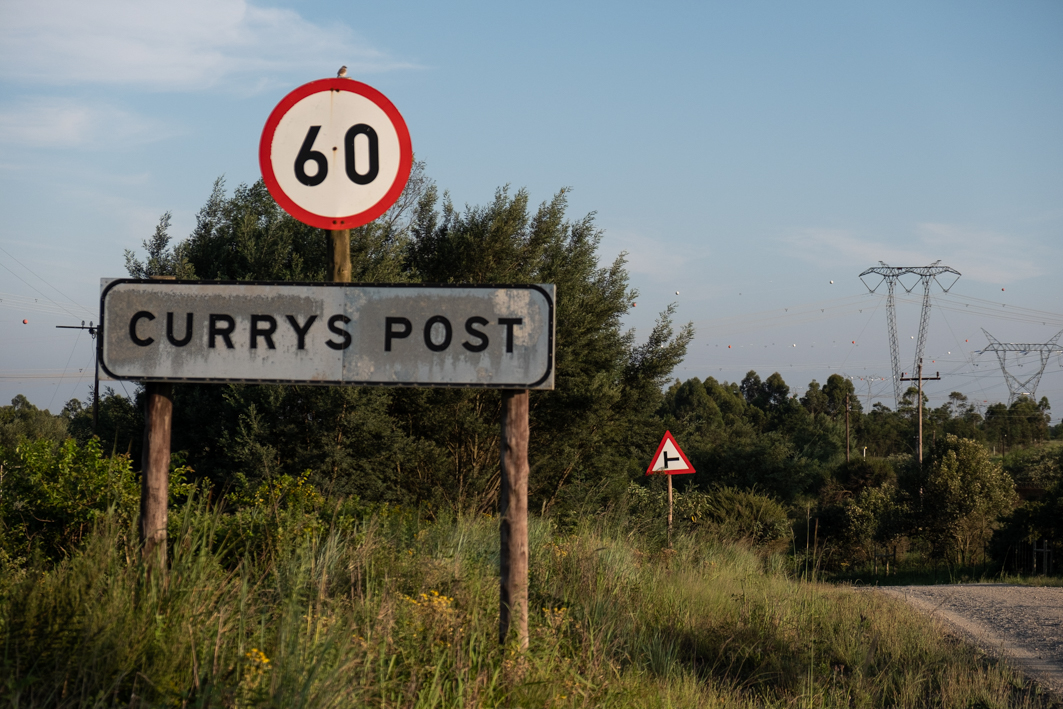In the January issue of Leisure Wheels, Leilani Basson wrote about her quest to find the Indian-inspired temples of the Moordenaars Karoo. This month Greg van der Reis discusses the possible origins of the ancient petroglyphs that can be found in southern Africa. How old are they? And what civilisation could have been responsible for their creation? It remains a mystery. For many people, the history of southern Africa begins with the voyage of Bartholomew Diaz around the ti p of Africa in 1488. The reason for this Eurocentric view, of course, is that so little is known about the tribes that lived here before that period. Since very little documentati on exists, life in southern Africa prior to Diaz’s voyage is effectively prehistoric (prehistoric in the sense that it was an era before writing and recorded history). But this view can be misleading. Evidence of these early tribes exists in the form of petroglyphs – rock engravings created by carving into rock surfaces – and cave paintings. And the information gleaned from these artworks is tantalising. I have been documenting the petroglyphs of the Northern Cape, and specifi cally the Richtersveld, for more than 12 years. These petroglyphs are different from the well-known petroglyphs found in Clarens (Free State), but share similarities with those found in Schweizer Reneke and Ottosdal (North- West Province) and even some islands in the Pacific Ocean. The Clarens petroglyphs are thought to be between 100 and 150 years old and are generally believed to be game boards used by shepherds to pass the hours while tending their animals. The other artworks, however, are older. Much older. The petroglyphs found at Wildebeest Kuil near Kimberley, for example, have been dated to the late Stone Age (1200 to 1800 years ago). Some South African rock paintings have also been dated using the latest radio carbon dating technology. Both Aron Mazel from the School of Historical Studies at the University of Newcastle upon Tyne and Alan Watchman from the Australian National University in Canberra estimate the paintings in the Drakensberg to be around 3000 years old. Other experts suggest they may be 8000 years old. So considering their age, who created these carvings and paintings? One theory suggests they are the work of the Hottentot people who migrated south from Botswana thousands of years ago. Others believe they are largely the work of the Khoisan, and that these tribes have been here for 8000 years.There is some circumstantial evidence that corroborates these theories, at least in part. Sheep bones that are 2000 years old have been found in parts of southern Africa, which suggests that Khoekhoe herders lived here for two millennia. Hottentot burial cairns found at Augrabies Falls have been dated to 1300AD. But people may have lived here far earlier than 2000 years ago. Deposits found in a shelter near the Klasies River Mouth show that human beings were using tools there between 30 000 and 50 000 years ago. If these people were using tools, could they not have been creating petroglyphs? Regardless of who created the petroglyphs, though, the nature of the artworks remains intriguing.To be sure, many of the etchings contain predictable depictions of elephants, ostriches, antelope and people, but others are more enigmatic. And they contain signs and symbols that can be found in petroglyphs across the globe. As yet unexplained symbols that resemble sunfish, unidentified flying objects and crop circles are found in Africa, Australia and the Americas. What could explain this similarity? And what do these symbols mean? While doing research in preparation for an expedition to find the Lost City of the Kalahari in 2002, I stumbled across information on texts found in Egyptian temples that suggest that north African cultures were exploring the oceans around Africa four millennia ago. So perhaps the mysterious symbols originated in Egypt, or some other ancient civilisation, and were disseminated when these people travelled the world. It is a fascinating theory, but hard to prove conclusively. We may never know for sure.









